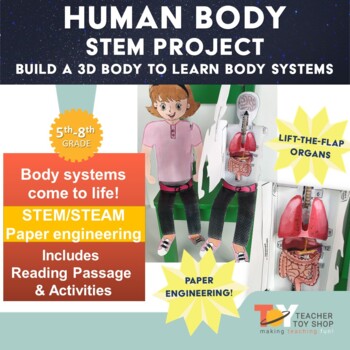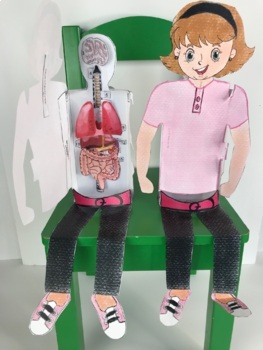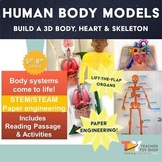Human Body Systems STEM Project
Also included in
- Make anatomy models out of paper! Learn about human body systems while making these models. They're EASY and require only paper, tape and glue. Students will gain an understanding of the major systems of the human body and have a final project they are VERY proud of. These human body projects make tPrice $18.99Original Price $23.49Save $4.50
- All of Teacher Toy Shop's Life Science resources in one place! Some biology topics included: cells, ecosystems, human body systems and organs, flowers, reproduction, human eye, and more. Includes NGSS aligned lessons, experiments using the Scientific Method, and more.Purchase this bundle for a low-pPrice $49.99Original Price $80.66Save $30.67
- Looking to end the school year with a bang? These WOW end-of-school activities and science projects only require 1, 2, or 3 class periods each to complete. Classroom already packed up? No problem—you need only paper, scissors, glue and/or tape to complete these projects. Keep students engaged and lePrice $19.99Original Price $26.94Save $6.95
Description
Learn the systems of the human body while building a 3D human body model with lift-the-flap organs! This human body systems project teaches students where organs are located within the human body. The finished model sits up by itself on the edge of a table or chair—super cute! Students enjoy coloring their model, inside and out.
Included in this resource:
- ready-to-print template for a 15in. tall human body model with 15 internal organs
- fully-illustrated, step-by-step instructions PLUS a link to a video that shows how to build the model
- 2-page reading passage
- Fill-in-the-box information strips activity which are sized to fit the back of the completed model
These human body organs are included: brain, spinal cord, kidneys, bladder, esophagus, stomach, trachea, gallbladder, spleen, lungs, heart, pancreas, liver, small intestine, large intestine. Use this resource to teach human body levels of organization, organs of the digestive system, nervous system, respiratory system, and more. Bonus: make this item seasonal by challenging students to create a hat or other prop for the finished item (e.g., a St. Patrick's Day hat).
You may also be interested in these fun (and wow!) science resources:
- Life-Size Printable Skeleton
- Pop-Up Human Heart Model
- ALL of Teacher Toy Shop's body models in one money-saving bundle
- Pop-Up Flower STEM activity—terrific for reinforcing the parts of the flower
- Parts of a Flower Dissection Science Lab
* Visit the Teacher Toy Shop store and click on the green star to be the first to know about new products, sales and freebies.
** Please remember to rate this product so that you earn TPT Credits for future purchases!









